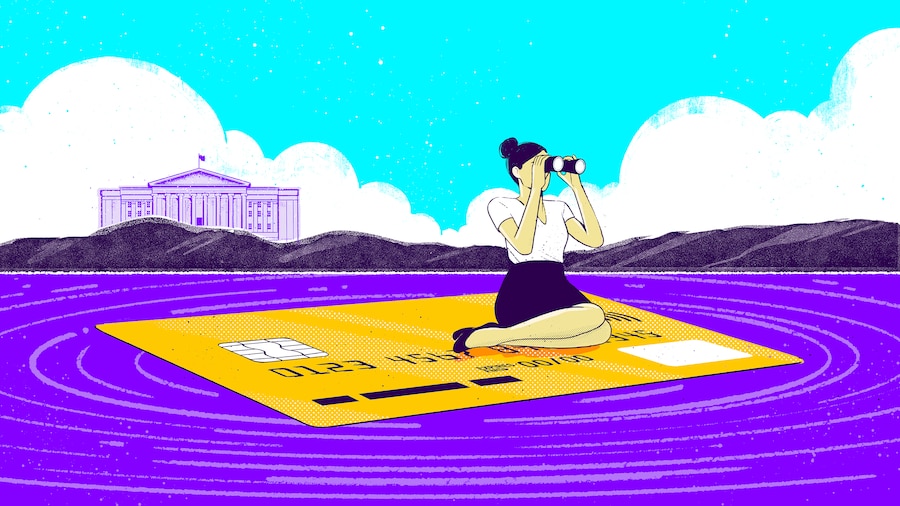It takes planning and discipline to build up a savings cushion, but that money can start to disappear quickly after a job loss.
With thousands of federal government employees out of work in Maryland — and some facing long periods of unemployment in a tough job market — we talked with financial experts about managing money during a difficult time.
“It’s not like the pandemic, when there was cash assistance that was coming,” said Sue Rogan, the director of strategic partnerships at the CASH Campaign of Maryland, a nonprofit that promotes economic advancement for low- and moderate-income Marylanders.
“There isn’t any real dedicated funding to help them with this transition,” she said.
Experts offered advice on how to protect yourself and your family when money is tight, including how to take on debt as responsibly as possible.
“A job loss can be completely overwhelming,” said Sarah Adam, a financial advisor for Edward Jones. It can be hard to make the best decisions when you’re feeling vulnerable and stressed, she said, but “you can make strategic choices even in this moment of crisis.”
Start planning now
If you are out of work and your job applications aren’t getting traction — or if you think you might lose your job — make a financial plan before your savings run out. Identify flexible expenses where you might be able to find cheaper options, like car insurance or internet providers, and reduce nonessential expenses like DoorDash.
“This is the time to make sure they’re watching every dollar getting spent,” Rogan said.
Think creatively about new ways to bring in money, like an online side gig (just watch for job scams) or selling belongings you no longer need. Rogan said she spoke to one man who is selling his vinyl records.
If you’re able to put money aside in savings, Adam advises placing it in a high-yield savings account so that it earns as much interest as possible. A financial advisor can help you explore options with higher returns, such as a money market fund.
You can find a list of certified financial planners offering pro bono or reduced-rate services to federal workers at the CFP Board website.
Take advantage of benefits and other assistance programs
There’s help out there, and you should take advantage of it, Rogan said. Some federal workers she’s spoken to felt they didn’t need to apply for unemployment if they relied on their savings or a modified spending plan, but unemployment benefits exist for moments like this.
“Try to get past the mental image of ‘I’m not the kind of person who needs public benefits,’” Rogan said. “Do something to get any kind of money coming in.”
The same goes for food banks and other free resources, like those you might find at your public library. The CASH Campaign can tell you if you are eligible for public benefits and connect you with local resources.
There are also small loans available for federal workers. Maryland’s Federal Worker Emergency Loan Program offers an interest-free $700 loan for state residents who recently lost their federal jobs and are experiencing financial hardship. The Federal Employee Education and Assistance Fund is also offering no-interest loans of up to $2,000 to federal workers who recently lost their jobs.
“The biggest message,” Rogan said, “is to do what you can to get some income coming in so you’re minimizing the use of savings and reducing the potential amount of debt.”
Be smart about debt
If you have to take on debt, there are strategies to minimize harm. Understanding your debt, including the interest rate and other terms, is an important first step, Adam said.
“Keep in mind that not all debt is equal,” she said. Credit card debt is generally one of the highest-interest options available, which makes it more difficult to pay off compared to other forms of debt.
“Credit cards, while a very useful tool, need to be used as such and … only strategically used,” she said.
While Adam emphasized that every individual’s situation is different, she generally advises clients to prioritize paying off debt and then put money into savings. Start with your highest-interest rate credit card, even if you can only pay a little extra each month, while also making minimum payments toward any other debt you have, she said.
Once that credit card is paid off, put the money toward your credit card with the second-highest interest rate, and so on. Once your debt is paid off, you’ll have a chunk of money that you already set aside each month that you can put into savings.
Many people feel ashamed or helpless about their credit card debt, Adam said. But you’re not alone — almost 80% of U.S. households have some debt, she said.
You can explore debt optimization strategies like consolidating credit cards or using a personal loan with a lower interest rate to pay them off and give yourself more breathing room, she said.
“There is a way to get out of it, and you’re not unique,” she said. “You haven’t messed up compared to everyone else in the country.”

